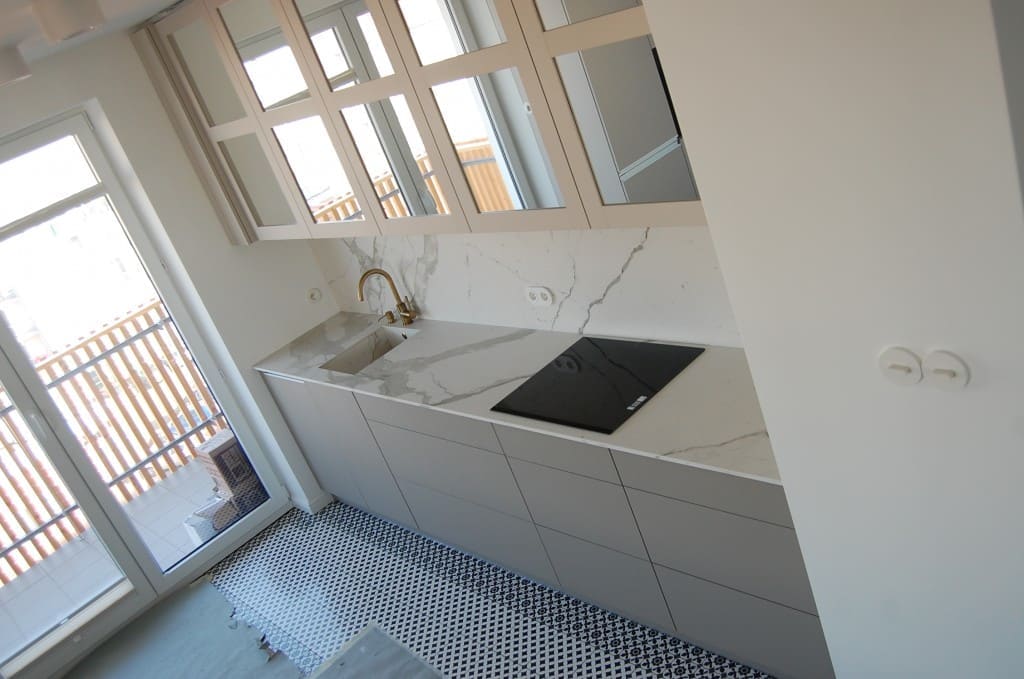Our Blog
When to choose steel inserts?
A lot of people wonder what type of a fireplace insert they should choose: a steel one or a cast-iron one? In no way is it an easy task, especially that before taking a decision, we should consider a number of other factors. To dispel any doubts, we are going to demonstrate when to choose steel inserts and when cast-iron ones.
A lot of people wonder what type of a fireplace insert they should choose: a steel one or a cast-iron one? In no way is it an easy task, especially that before taking a decision, we should consider a number of other factors. To dispel any doubts, we are going to demonstrate when to choose steel inserts and when cast-iron ones.

When to choose a cast-iron insert?
Fireplace inserts, due to their application, have to be resistant to the influence of high temperatures and they should also be able to accumulate warmth produced during the process of wood combustion. Those who take a decision to buy a fireplace, are on the horns of a dilemma: which insert to choose from? To be able to answer this question, we need to take a closer look at the advantages of each of them. This time, we are going to present the properties and the application of cast-iron inserts.
The material, which an insert is made of, is to accumulate warmth and to have a heating capacity sufficient to heat a few rooms. Can cast-iron inserts fulfil these two functions? Below you will find the advantages and disadvantages of cast-iron fireplace inserts.
Cast-iron fireplace inserts were the first inserts on the Polish market. Their body consisted of simple iron castings linked with each other by means of steel screws. Along with the growing popularity of fireplaces, the offer was extended to include steel inserts or water jacket inserts. Until now cast-iron inserts have been making up a big part of sold fireplaces.
The advantages of cast-iron inserts
Cast-iron inserts are lower-priced products, which means that almost anyone can afford to buy them. Its production costs are much lower than the costs of welding steel body. Additionally, the material cast-iron inserts are made of, is characterised by a very high resistance to high temperatures while in continuous operational state. It means that when used properly, they are very durable. However, if for example a fireplace is lit too fast or the wood loaded is still frozen, it can cause the cracking of an insert resulting from thermal stress. Due to their massive construction, cast-iron fireplaces match rustic and classic interiors. They seem to be a bit overwhelming in modern interiors.
The disadvantages of cast-iron inserts
Cast-iron fireplaces have their minuses, too. The main inconvenience is its lack of tightness, which can appear after a few years of being utilised. The sealing, which is used, crunches with time. An additional drawback of cast-iron inserts might be a necessity to replace fire clays after a few heating seasons, because large-size profiles are not resistant to bigger impacts.
One should remember that typical cast-iron inserts (so called:„budget inserts”) do not offer the heating capacity higher than 50%, so they are not suitable for heating big houses.
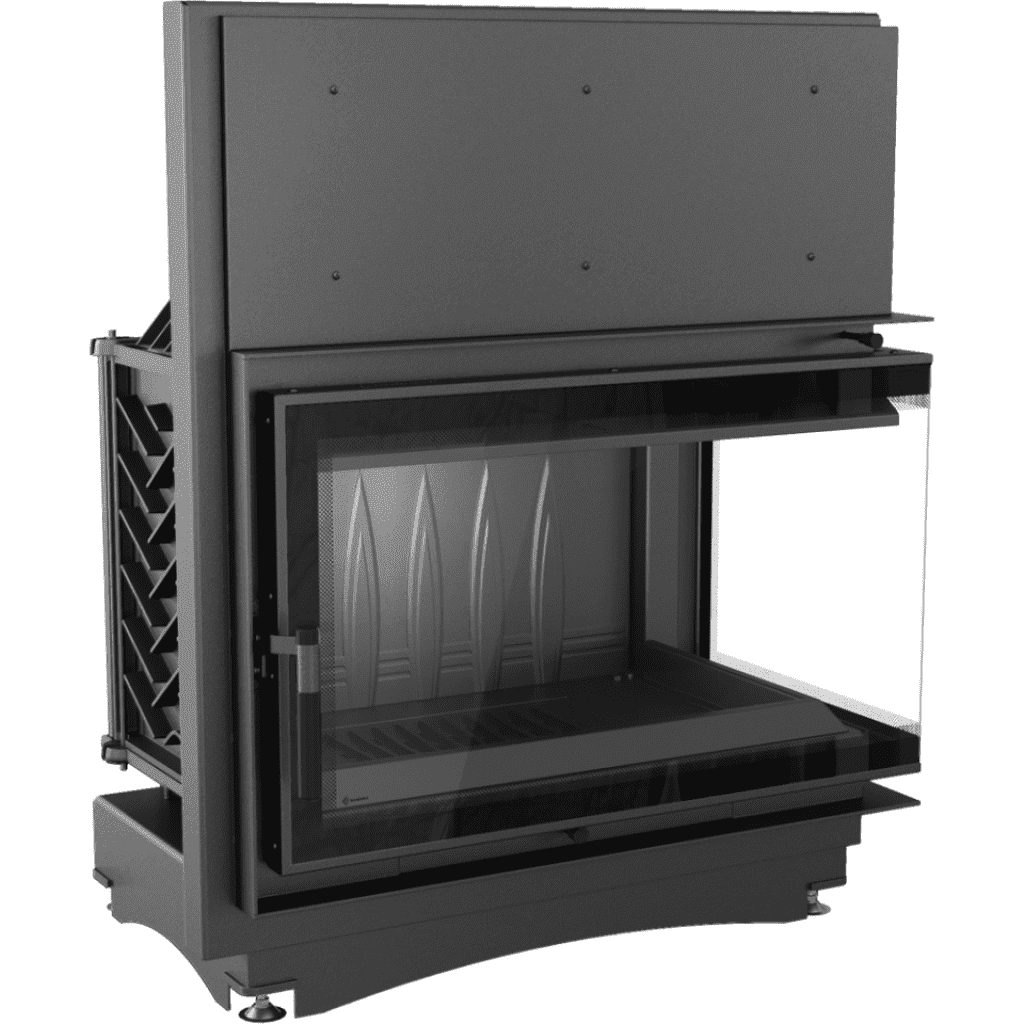
Zapytanie ofertowe wrzesień
Przedsiębiorstwo udziela zapytania ofertowego na Centrum Numeryczne CNC - 5 osiowe.

When is it worth choosing a bio-fireplace?
When designing their interiors, a lot of people dream of their own fireplace, which will give their space a cosy and warm feel. However, the installation of a traditional fireplace is not always possible. In that case, a bio-fireplace is a perfect solution. When is it worth choosing a fire-place and how to install it?
A bio-fireplace is an ecological fireplace, which does not require any installation of a flue and chimney system, of a ventilation system or an external air supply system. It is an interesting alternative for anybody, who wants to enjoy the flicker of fireplace flames.
A bio-fireplace - who for?
First of all, a fireplace is an ecological decorative element of any interior, which does not have such requirements as a standard room fireplace does, which means it can be installed anywhere we feel like it - including small spaces like the ones in blocks of flats. A bio-fireplace can either be an additional source of heat or the only one.
A bio-fireplace usually resembles a traditional room fireplace, however, a lot of producers offer either its miniature varieties or a free-standing designers versions. The latter ones are more convenient as they can be installed in places of our choice. We can hang them on the wall, build them into a niche or even mount them on the ceiling.
Bio-fireplaces, which is relevant, do not require any building permits or connection to a chimney installation. Thus, they can be installed in any place. Detailed installation instructions are found in producers’ manuals. A bio-fireplace is a perfect ground for architects, interior designers or ordinary users to show their talents.
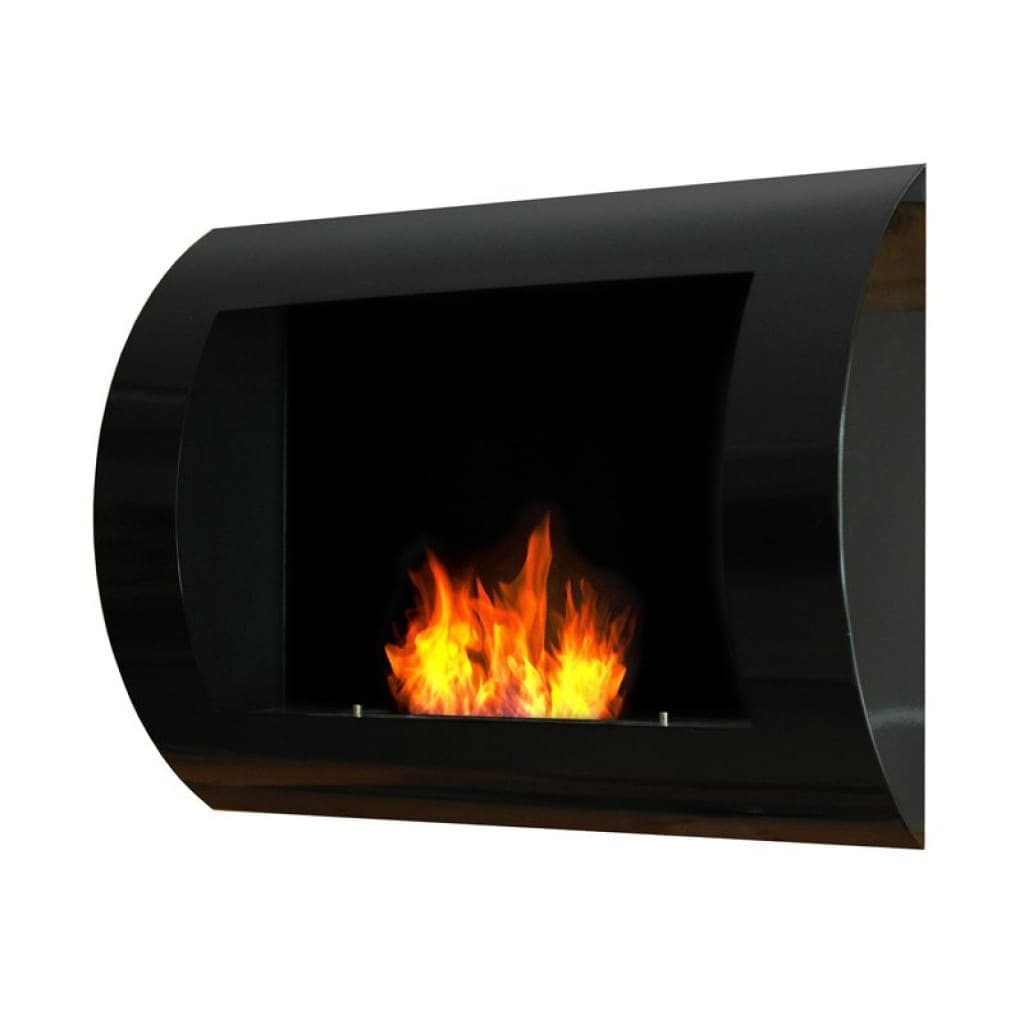
Which to choose: conglomerate or granite?
When completing a kitchen, a lot of customers decide on kitchen worktops made of conglomerate, frequently giving up the idea of natural stone. Undoubtedly, it is a good decision - all the more so because both these materials are characterised by top quality. So which one to choose for our kitchen worktop: conglomerate or granite?
There is an ongoing discussion among producers of kitchen worktops which material is better: conglomerate or granite? It is common knowledge there are as many opinions as there are men taking part in a discussion. Let’s have a closer look at the arguments used both sides.
Kitchen worktops and window sills made of conglomerate
Conglomerate is nothing more than a ground stone, which when combined with epoxy resin forms the product, which is hard and resistant to scratching. Conglomerate can be produced from different types of stone as marble conglomerate or granite conglomerate. Thus the first one will be less resistant when in contact with acids, so if we look for the material of the highest standard and resistance, we choose the second one.
Conglomerate kitchen worktops have a lot of advantages. One of them is their capability of being formed into worktops of various thickness, their lightness and a lower price. Seamless joints enable obtaining specific shapes of non-standard sizes making conglomerate an ideal material for window sills. On the other hand, if we care about having a worktop of natural texture, we should reach for a real stone. In whatever way we paint it, conglomerate will never reproduce the cross - section of real stone while shining coating can be easily scratched.
Granite worktops
Granite worktops have always been considered to be the most beautiful. They possess all the above-mentioned qualities of conglomerate worktops, but they are twice as expensive. Possible scratches can be easily polished. Another disadvantage of granite worktops is their weight. Thicker granite worktops frequently require furniture of a more reinforced construction. The resistance to high temperatures, to scratches, slow warming up and non-inflammability of granite worktops often compensate for their disadvantages.
No matter if we choose conglomerate granite kitchen worktops or not, we should remember about impregnating them to preserve their beauty as long as possible.
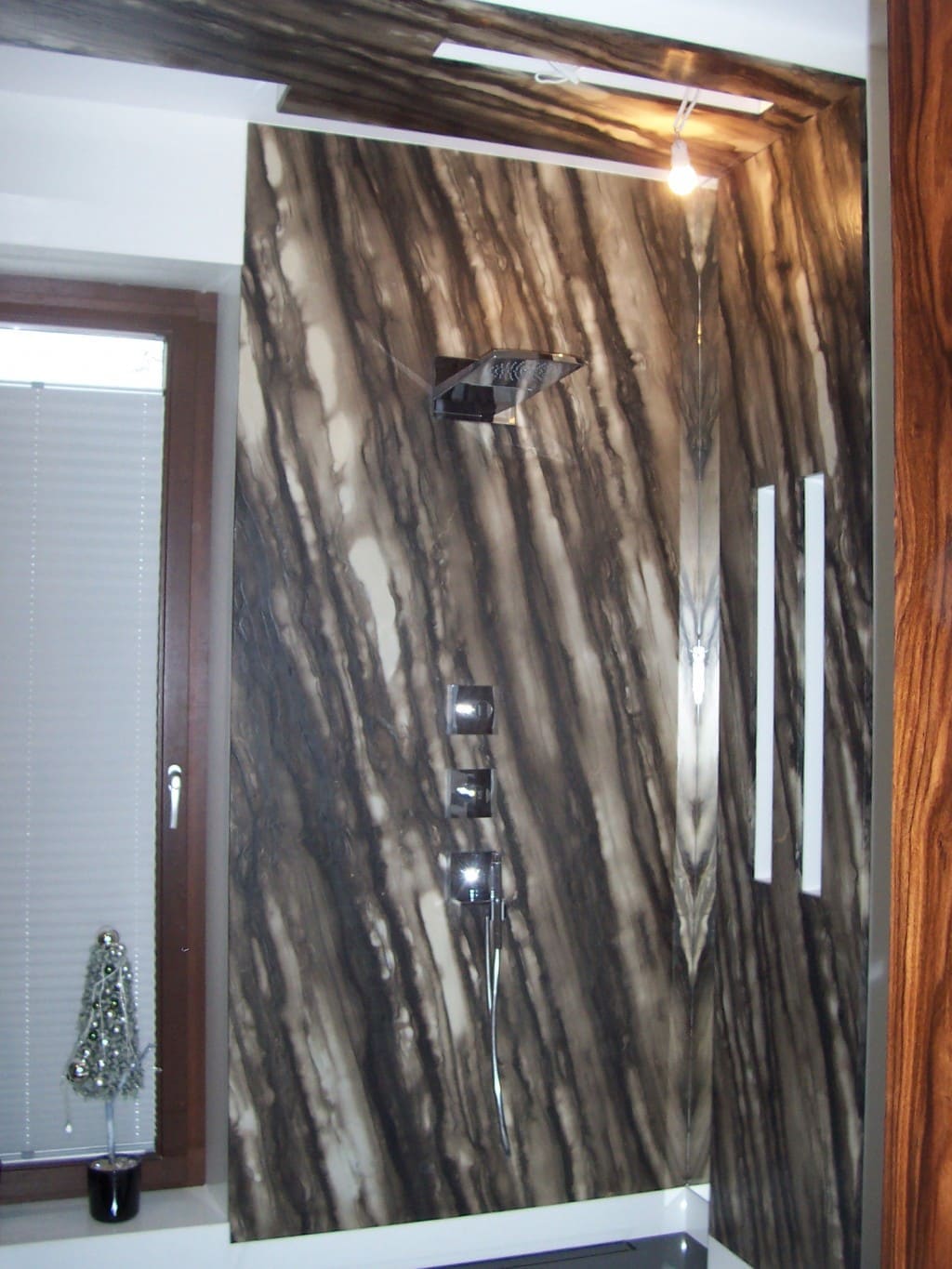
The applications of marble conglomerate Botticino
- Marble conglomerate is more and more frequently selected as a decorative and finishing material. More and more people decide to buy this stone due to its high quality, affordable price and a wide array of applications. We will give you some suggestions what to use it for and we will highlight the advantages of this product.
What is marble conglomerate Botticino?
Marble conglomerate has a lot of advantages valued by customers all around the world. First and foremost, marble conglomerate:Marble conglomerate Botticino is nothing more but a composite stone consisting of natural marble (95%) and polyester resins (5%), which form a compact stone resistant to abrasion. It is a perfect substitute for natural marble.
Marble conglomerate Botticino - the advantages
Marble conglomerate has a lot of advantages valued by customers all around the world. First and foremost, marble conglomerate: - does not have any hidden effects (inner cracks)
- is found in a variety of colours and shades, ·
- is easy to be installed, ·
- is characterised by lower absorption compared to natural marble, ·
- is easy to be maintained and cleaned;
- adjusts to its ambient temperature.
Marble conglomerate Botticino and its applications
As we have mentioned before, marble conglomerate has a wide range of applications and the possibilities of making use of it, are almost unlimited. It can be used everywhere a natural stone or ceramic tiles or terrazzo are traditionally used. So, it can be applied to produce floors, conglomerate window sills, interior floorings, stairs, or kitchen worktops as well as other finishing elements.
A lot of customers decide on the window sills made of marble conglomerate Botticino because it enhances an elegant ambiance of any interior. This does not mean, however, that it can only be used indoors. When opting for marble conglomerate Botticion, we should mainly consider whether or not this material will match our interior.
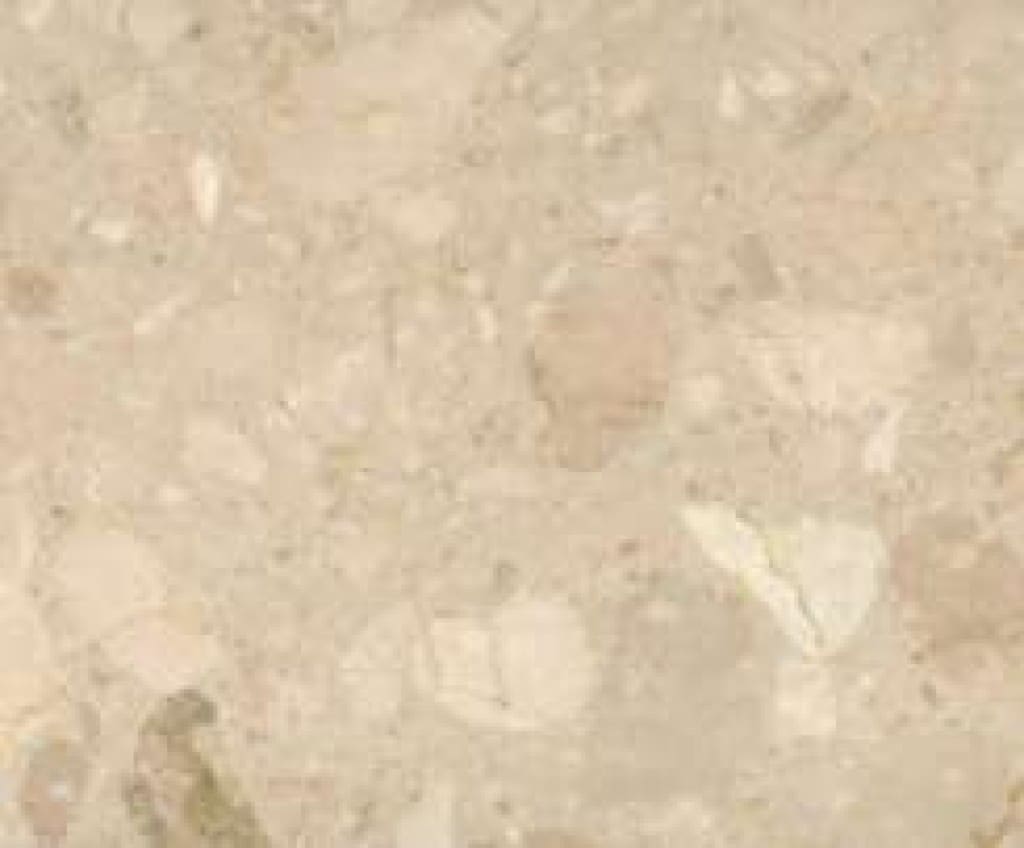
How to install a conglomerate window sill?
The installation of an interior window sill is not difficult and definitely everyone is able to do it by themselves. As conglomerate is resistant to scratching and to changeable atmospheric conditions, it is an ideal material for window sills to be mounted at home. In our blog we will give you a few tips how to install a conglomerate window sill?
When to change a conglomerate window sill?
Most frequently we change our window sills, if they look ugly and are damaged. Not only do such unattractive sills disfigure our windows and our interiors but they can also contribute to the water penetration inside a building. If possible, we can try to renew our damaged window sills by cleaning , painting or cladding them. After some time, however, nothing else can be done and our window sills have to be replaced.
The installation of conglomerate window sills
Such installation should begin with a proper preparation of the wall surface, where a window sill is to be mounted. Next, the surface has to be levelled, polished, defatted and most importantly, it has to be dried. Conglomerate window sills are to be mounted with fast-drying polyurethane glue. First, we apply a thin layer of glue along the whole length of a slab, and then we match the elements precisely with a putty knife and press them at once. The average glue usage should be approximately at 0,3 kg/m 2, the applied glue gets hardened when in contact with humid air in 2 to 4 hours. In case the humidity is lower, the whole process can take up to 24 hours. During this time, we should make sure the sill remains in the same position and it is tightly pressed. For this purpose, we can place a wooden shim between the edge of the window recess and the upper edge of the plain surface and lift it at the midpoint or to encumber it evenly.
The installation of conglomerate window sills is not complicated. You can also apply ready mixed dry set mortar. The gaps at the junction of the window sill and the window can be masked with assembling and finishing PVC profiles - self-adhesive flat bars or quarter rounds. Additionally, to prevent the water penetration into cavities between the sill and the jamb, you only have to seal them with silicone. Finally, we plaster the wall under the sill and along its edges.
.jpg.w,1024.882.jpg)
Quartz sinter for kitchen worktops
Quartz sinter is nothing more than a high quality finishing material, resistant to scratches and chemicals and yet, 100% natural. So, is quartz sinter a suitable material for kitchen worktops? What strong points does it have and is it better than granite?
What is quartz sinter?
Quartz sinter is currently one of the most up-to-date and technologically advanced composite stone. It is a mixture of shale, granite rocks and ceramic pigments. Such granulate is then pressed and sintered at approximately 1220 During this process, the pressing force is as much as 8000 tons / m2. All this makes quartz sinter an exceptionally durable material, which has a lot of advantages.
Quartz sinter - advantages
·
- capability of producing slabs of big formats; ·
- capability of producing comparatively thin slabs; ·
- lightness of quartz sinter; ·
- minimal absorption; ·
- high resistance to scratching; ·
- 100 % natural material, without the addition of resin
Quartz sinter is characterised by high resistance to scratches and to various chemical substances as well as to water. It comes as no surprise that quartz sinter is an ideal material for kitchen worktops but not only ……. . It is a universal product, which can also be used in the production of flooring, wall cladding and even external wall cladding. You only have to choose the right thickness. A list of its applications is impressive and a final effect leaves us enraptured by its beauty, its high quality and the ease of keeping it clean. So, if you are pondering what material to choose for your kitchen worktop, think about quartz sinter.
It is an ideal material for window sills.
